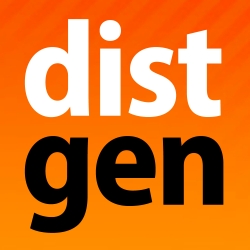The Distributed Wind Farm (DWF)
Even though large scale wind generated electricity is now becoming commonplace, certain assumptions about how it is best delivered have become embedded in public consciousness. In some cases these underlying assumptions are accurate, in other cases they are misleading, even unhelpful. When subjected to logical scrutiny the premises they are built upon are questionable and they are certainly not universally applicable.
Bigger is not always better
One of the most pervasive myths today is that bigger is generally better, that potential economies of scale can be attained and that costs can be better amortised across a large asset base. This belief has wide subscription in the global wind energy business and may well be true in some circumstances, most particularly off shore wind. One of the most significant downsides of the ‘big is best’ philosophy is that it means that the capital requirement for direct participation is vast; only large institutions and the super rich can be direct investors, everyone else is relegated to the role of consumer, indirect investor or spectator with no effective leverage or control. DistGen’s DWF is designed to facilitate motivated individuals, groups or small/medium enterprises a way to directly participate in the ownership of their power generation resource.
In addition to the capital scale issues for ‘big is best’ to be valid, a number of other physical factors have to be present. In many instances, however, there are a combination of factors that render it an inaccurate oversimplification; our term for this combination of factors is ‘sparse grid’. Where ‘sparse grid’ exists, a large conventional wind farm is unlikely to be commercially viable or the site may be unsuitable for other reasons such as aesthetics. This does not mean, however, that the site is intrinsically unsuited for wind generation and that a different approach may very well be viable. The DistGen DWF is a good fit for many of these situations and offers a viable solution for distributed renewable power generation.
So what is a DWF? At its core is the insight that the prime attribute of a wind farm is not its physical location; that a wind farm need not be ‘many turbines in one location’ but can instead be ‘many turbines in many locations;’ The core elements that make a collection of discrete individual wind turbines in to a collective entity known as a wind farm are:
- The capability for timely on site maintenance and repair of any of the turbines which comprise the wind farm
- An automated remote management system shared by all turbines in the wind farm giving a single logical view of the wind farm
These attributes are equally true for conventional wind farms. The following table illustrates the key differences between a typical conventional wind farm and DistGen’s DWF:
| Conventional wind farm | Distributed wind farm |
| Single geographically contiguous location | Many disparate geographically locations |
| Single landlord | Many landlords (one per site) |
| Single owner partnership/Joint Venture | Many owner partnerships/Joint Ventures |
| Single grid connection | Many grid connections (one per site) |
| Susceptible to low wind conditions | Less susceptible to low wind conditions overall |
This apparently obvious and seemingly innocuous restatement overturns most of the economic imperatives that drive the need for bigger turbines and massive wind farms with tens or hundreds of turbines. A DWF facilitates the installation of a single turbine wherever a favourable set of circumstances prevail but without losing the scale advantages that accrue to a large conventional wind farm operator.
Medium Size Wind Turbines
To make the DWF a reality we require wind turbines that generate a near-industrial scale electricity while at the same time are cost effective to manufacture, obtain planning permission for, install and maintain. Our key strategy is to utilise medium size turbines with the general specification:
- 200 to 250 KW power output
- 24 to 30m diameter blades
- 30 to 50m lightweight sectional and tilting tower
